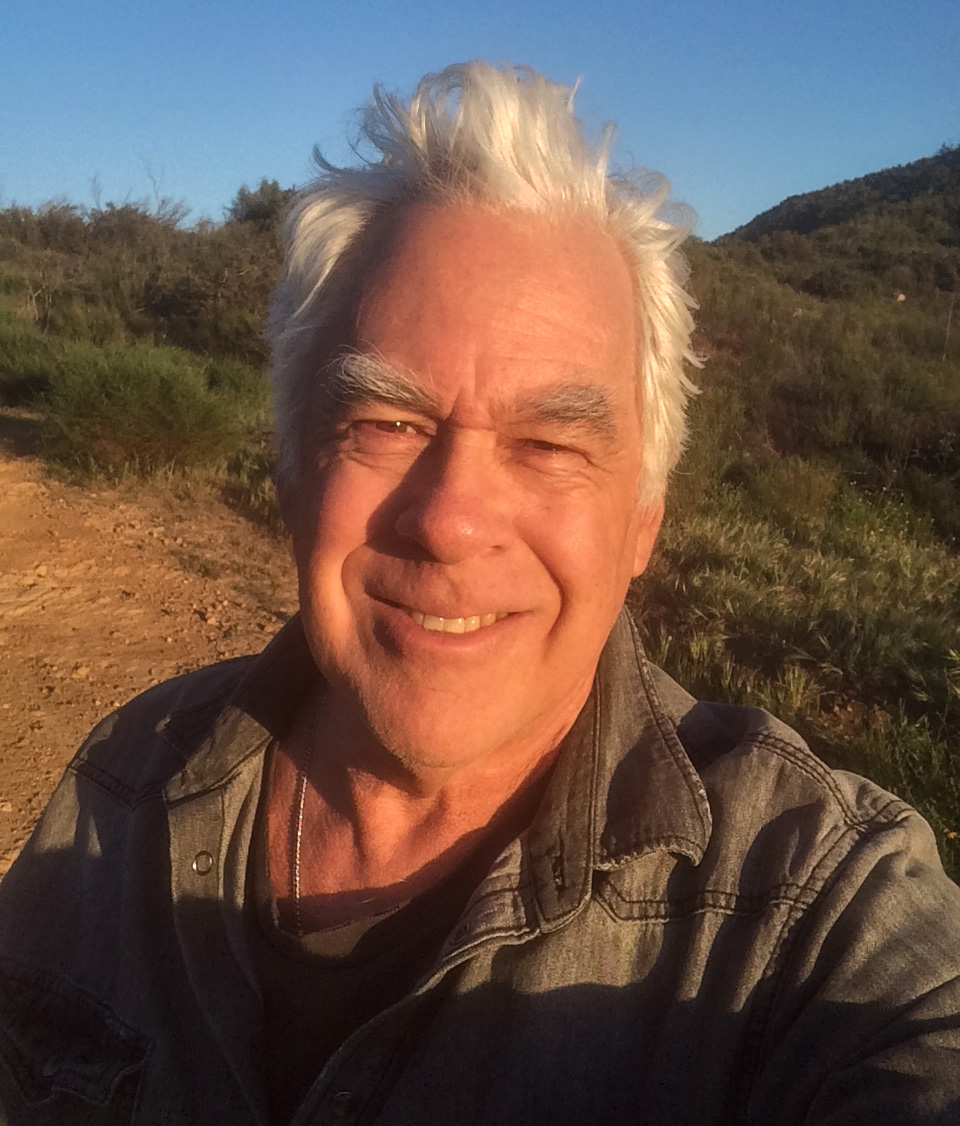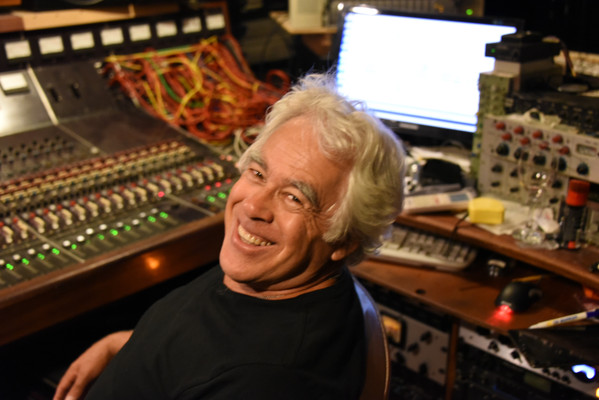Taking a journey through John Hanlon’s remarkable past is like meeting a character straight out of a song by his longtime studio collaborator and co-conspirator Neil Young.
Working painstakingly with the tapes, Hanlon was able to pare down some of the horns and orchestration and declutter the recordings.

An American producer, engineer and mixer who has worked with the Rock and Roll Hall of Fame artist for almost 40 years, Hanlon is a true music production pioneer, who knows the insides of legendary recording studios from Indigo Ranch to Sound City, from Crystal Sound to the Record Plant, from Cherokee to the Beach Boys’ Brother Studios.
Capable of arranging sessions in virtually any location, even memorably parking the Record Plant mobile truck on Young’s Broken Arrow Ranch in Northern California to record Crazy Horse’s Ragged Glory, Hanlon is a sonic perfectionist highly skilled in the fading art of analog recording with vintage gear, yet one who can fluidly adapt to more modern digital or hybrid recording techniques.
His relationship with Young began in 1983 with the remix of two songs on the Trans album, under the direction of renowned producer David Briggs. Hanlon then went on to serve as one of Young’s go-to producer/engineers right up through the recent release of Way Down In the Rust Bucket, 1990 live sets from the Catalyst in Santa Cruz, and the mixing of Young Shakespeare, originally recorded at the Shakespeare Theater in Stratford, Connecticut in 1971. Other highlights from his lengthy stint with Young include the Dead Man soundtrack score in 1996, 2016’s Earth featuring Lukas Nelson & Promise of the Real, and 2019’s Colorado recorded at Young’s Studio in the Clouds in Telluride. Coming up, Hanlon worked on both an expanded Ragged Glory reissue and the long-anticipated release of 2001 album Toast. He is also known to Young fans as the acerbic writer of J. Hanlon’s Notebook, a column on Neil’s archival website NYA Times Contrarian.
“Neil always makes you better than you were before you started,” says Hanlon. “He takes you to the edge of the cliff, and says, ‘Do you wanna jump?’ and before you can answer, you’re going over the cliff with him. He pushes everyone as hard as he does himself.”
Hanlon – who apprenticed under and subsequently cites producer/engineers Andy Johns, Chris Huston and Keith Olsen as seminal influences – has worked with two of the four principal engineers on Led Zeppelin II in Johns and Huston, learning the intricacies of mic placement and numerous British recording techniques. Other notable producers Hanlon has worked with include Roy Thomas Baker, Gus Dudgeon, Tom Dowd, Bob Ezrin, Luther Vandross and T Bone Burnett. The artists he’s worked with range from R.E.M. to the Beach Boys, from Night Ranger and Lita Ford to Aretha Franklin and Cheryl Lynn, from Stephen Stills and Gillian Welch to Cat Stevens and Jackson Browne. In the 90s he was sought out by alt-rock bands such as Blind Melon, The Posies and Campfire Girls, who wanted his classic retro sound and masterful knowledge of vintage Neve consoles.
His own eclectic musical tastes run from the blues artists he saw while stationed in Memphis – Mississippi Fred McDowell, Furry Lewis and Bukka White – to early and modern country and jazz, citing the likes of Bill Evans, Monk, Coltrane and Miles as favorites.
“Music just went through my soul,” he says. “But I never thought I would have a career doing it.”
Growing up in New Hampshire, Hanlon was a self-described “electronics nerd,” who enlisted in U.S. Naval Air right out of prep school. What was he thinking? “I wasn’t, but I had to get out of New Hampshire,” says Hanlon. After discharge, Hanlon took his USN technical skills to Birmingham, Alabama, for a nine-month stint before landing in the Bay Area, where he started his college education at San Francisco State.
A chance meeting of a local DJ at a Bay Area bookstore led to an invitation for him to hang out at the KSJO studios, an underground FM station in San Jose, where he was given the opportunity to record, spurring his desire to become an engineer. His pal suggested he volunteer at Sound Genesis, a San Francisco film editing and audio transfer studio located next to the offices of Francis Ford Coppola’s American Zoetrope studio, and around the corner from Alembic. Hanlon had found his true calling.
Moving to Los Angeles, he took a job as a roadie for Rick Springfield, then Little Feat, who were touring with the Allman Brothers and The Who. “I went from programming computer systems to lugging guitars on and off-stage,” he laughs.
Coming off the road with Springfield, he entered Crystal Sound Studios, on Vine Street just south of Santa Monica Blvd. in Hollywood, a facility where the likes of Stevie Wonder and WAR recorded. He got a job for six months at Cherokee Studios in Chatsworth, fixing tape machines and recording consoles. He told the Record Plant L.A.’s Chris Stone and Gary Kellgren, if they didn’t want to hire him, to please return his resume because it was the only copy he had. He got hired immediately as a studio technician there when they realized he didn’t apply to all the other L.A. studios like everyone else. “The world opened up for me after that,” says Hanlon. “If you were a tech at the Record Plant, you could get hired anywhere.”
Hanlon landed a job at the Beach Boys’ Brother Studios in Santa Monica, where he worked as an assistant engineer under Earle Mankey on Fifteen Big Ones, and started engineering on The Beach Boys Love You and their M.I.U. Album, also getting guitar and engineer credit on Dennis Wilson’s solo album Pacific Ocean Blue, as well as working as a producer and mixer on the 2008 Legacy Edition reissue embodying the long unfinished album Bambu for Wilson.
Presently residing in Malibu, CA, Hanlon lives for the recording process – to be an effective producer, he has to feel the music coming through the faders. “I like to be challenged,” he says. “I love working with hungry, new bands and talented songwriters. As a producer, I believe if you record the right band, in the right room, you can get that magical performance without second- guessing it later.”

John Hanlon knows recording studios inside and out and has honed his live recording skills from his early years working on the road with bands. As a musician himself, he’s a strong believer in the spontaneity of live recording. This, in addition to his extensive archival and restoration work on Neil Young’s deep catalog of albums and performances, places him in a unique position in the world of recording. He is a tireless sound hound with an instinct for authenticity, and an ear for faithfully capturing an artist’s best and most timeless performance.